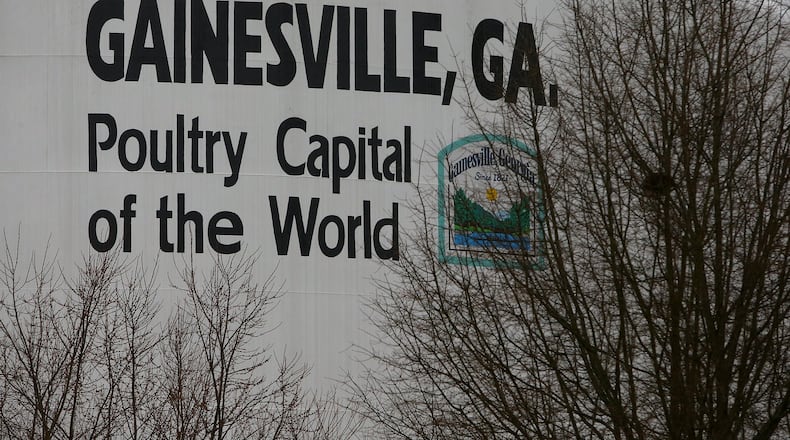More employers could be emboldened to block federal workplace safety inspections after a court ruling involving a Georgia chicken plant where an inspector investigating a worker injury was told to put a box over her head to avoid seeing other hazards.
Occupational Safety and Health Administration inspectors responded to an accident in which a worker was seriously burned at a Mar-Jac Poultry plant in Gainesville. The company resisted when OSHA attempted to expand its inspection into other hazards at the processing plant.
An attorney for Mar-Jac told the inspector she would have to wear a box over her head to prevent her from seeing other hazards if she wanted to walk through the plant to examine tools in the injured worker’s locker.
The inspector refused to wear the box and wasn’t permitted to walk through the plant. The company, which had said it would cooperate with the accident investigation, later provided the tools for inspection.
The 11th U.S. Circuit Court of Appeals earlier this month sided with the poultry plant and a lower court judge who had killed a warrant that would have allowed the broader inspections of Mar-Jac’s property. The 11th Circuit includes Georgia, Florida and Alabama.
The appeals court, which didn’t directly mention the box-on-the-head issue, said before OSHA could do broader inspections, the agency needed to have specific evidence supporting a reasonable suspicion of other violations.
The inspector had a Mar-Jac log of work-related injuries and illnesses, but the court said that did not necessarily mean the issues were caused by OSHA violations or justify issuance of a warrant for evidence of violations.
Unlike Mar-Jac, most employers allow OSHA inspectors to look for violations beyond those directly tied to ongoing accident reviews, according to attorneys.
The appeals court’s ruling might lead more companies to resist those more sweeping inspections, said Howard Mavity, an attorney who represents employers and chairs Atlanta-based Fisher Phillips’ workplace safety practice.
The ruling “is a game changer for managing inspections,” Mavity said. “Educated employers are going to take advantage of this.”
Some employers have been “irritated by OSHA’s casual expansion of inspections” that might lead to findings of relatively low-risk hazards, Mavity said. But they typically went along to avoid getting crosswise with inspectors, he said.
A regional spokesperson for OSHA declined to comment.
Larry Stine, an attorney for Mar-Jac, said he doesn’t believe the ruling will have a major impact on OSHA because most employers already agree to OSHA inspections.
“The impact is that OSHA has to be a little bit more careful about how they select people for wall-to-wall inspections,” said Stine, a principal at Wimberly, Lawson, Steckel, Schneider & Stine in Atlanta.
The poultry industry had earlier pushed back against OSHA’s efforts to expand accident inspections into broader ones, he said. “We believe it to be unconstitutional.”
In other news:
In February 2016, a Mar-Jac employee suffered first-, second- and third-degree burns from an electrical arc flash when he used an non-insulated screwdriver on an electrical panel. Mar-Jac notified the federal government as required.
When OSHA inspectors arrived, the company restricted them to an isolated area where the accident occurred, away from most of the plant, which employed more than 1,100 people and processed more than two million chickens a week. When the inspector said she wanted to go to the injured employee’s locker to inspect tools stored there, another lawyer representing Mar-Jac said he would only permit that if the inspector wore a box over her head to “blind” her from any hazards she might see on the way, the inspector said.
The suggestion the inspector wear a box “was hyperbole on behalf of my co-counsel,” Stine told The Atlanta Journal-Constitution Friday.
Asked why Mar-Jac didn’t want the OSHA inspector walking through its plant, Stine told the AJC that Mar-Jac has its own safety personnel to conduct reviews and look for issues in an ever-changing work environment. OSHA inspectors are “enforcement officers,” he said. “Their jobs and what they try to do is find violations. They are not there for us, to be safety consultants.”
“Why,” he said later, “would you want to subject yourself to multiple fines where I would rather find it and fix it myself?”
Mar-Jac eventually faced citations and paid $20,000 to the government related to the accident involving the employee, who later returned to work, Stine said.
About the Author
Keep Reading
The Latest
Featured

